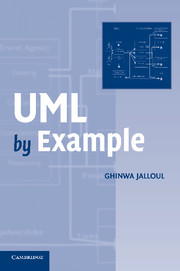3 - Reservations Online: Case Study 1
Published online by Cambridge University Press: 05 June 2012
Summary
Work on this case study was motivated by an anticipated need of travel agencies to improve their sales by making their products, namely, tours, directly accessible to their client base. Although this application focuses on travel agencies, it could be viewed as one instantiation of a general application framework that handles reservations in general, such as hotel and car reservations.
INCEPTION
USER REQUIREMENTS
User requirements are a summary of information that is collected by customers asking travel agencies about tours that the travel agencies offer. From that information we deduced the user requirements, shown in Description 3-1.
Constraints
For simplicity, we made two assumptions. The first one is that the customer can only reserve a single tour. Consequently, he is assigned a login ID and a password. The second assumption is that the customer can optionally reserve as many trips as he wants in his tour reservation. For example, suppose that the travel agency company provides a tour to Athens. Then the customer who chooses this tour can optionally choose one or more trips related to the Athens tour such as a trip to the temples or a tour to Olympus.
A software for a travel agency provides reservation facilities for the people who wish to travel on tours by accessing a built-in network at the agency bureau. The application software keeps information on tours. Users can access the system to make a reservation on a tour and to view information about the tours available without having to go through the trouble of asking the employees at the agency. The third option is to cancel a reservation that he/she made. […]
- Type
- Chapter
- Information
- UML by Example , pp. 83 - 129Publisher: Cambridge University PressPrint publication year: 2004



